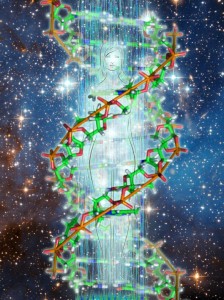Paul A Philips – Science is great for distinguishing fact from pure fiction. However, certain scientists indoctrinated into the various hierarchical trees of academia or research and development have the habit of turning a number of scientific principles, theories and tenets into ‘indisputable facts’ — in spite of evidence to the contrary.
Some of these ‘indisputable facts’ have had some serious challenges from outstanding scientists with their outside-the-box thinking. Bringing us new ways of looking into things they have had a tough time having been met with ridicule or invalidation from the scientific establishment and its conventional science.
Don’t get me wrong, indeed there have been and still are many crackpot ideas. However, having said that, here are 7 things ridiculed by conventional science but which are said to be true.
1. Junk DNA
 According to one study it has been found that we use around 8% of our DNA (previously it was thought to be 3-5%). Thus, science spends its time looking at this 8% subset, how it encodes for proteins involved in body construction… while the rest is described as ‘junk DNA.’
According to one study it has been found that we use around 8% of our DNA (previously it was thought to be 3-5%). Thus, science spends its time looking at this 8% subset, how it encodes for proteins involved in body construction… while the rest is described as ‘junk DNA.’
However, a number of Russian researchers begged to differ with the junk DNA viewpoint, believing that nature wouldn’t be so wasteful: In biology almost every structure exists to perform a function and junk DNA should be no exception.
So the researchers set out to investigate whether or not the junk DNA (link) was doing anything and they came up with some very interesting results. These experimental findings by Dr. Pjotr Garjajev and his colleagues can be briefly summarized.
- DNA sequencing follows the same basic rules and principles used in language formation (syntax, grammar, words and sentences…) Thus, it is not inconceivable that DNA sequencing and the‘language of genes’ acts as a blueprint for speech development.

 Christina Sarich – How do you continue to push GM crops on a population that has overwhelmingly voted against them in poll after poll? You start a campaign similar to the one the tobacco industry began in the 1920’s with the help of Edward Bernays to discredit any naysayers and even put doctors in commercials smoking cigarettes. You also do whatever it takes to buy out ‘real’ scientists and call those into question who inquire about the true safety of GM foods. You label them anti-science and discredit their credentials.
Christina Sarich – How do you continue to push GM crops on a population that has overwhelmingly voted against them in poll after poll? You start a campaign similar to the one the tobacco industry began in the 1920’s with the help of Edward Bernays to discredit any naysayers and even put doctors in commercials smoking cigarettes. You also do whatever it takes to buy out ‘real’ scientists and call those into question who inquire about the true safety of GM foods. You label them anti-science and discredit their credentials. Carolanne Wright – In a perfect world, research science would have unlimited funding, free from corporations or special interest groups, where all studies would be truly objective and unbiased. Unfortunately, this is rarely the case. Financing by private companies, or those who have a vested interest in the outcome of the research, often leads to biased conclusions which favor the sponsor of the study.
Carolanne Wright – In a perfect world, research science would have unlimited funding, free from corporations or special interest groups, where all studies would be truly objective and unbiased. Unfortunately, this is rarely the case. Financing by private companies, or those who have a vested interest in the outcome of the research, often leads to biased conclusions which favor the sponsor of the study.
 Mike Adams – Elon Musk
Mike Adams – Elon Musk